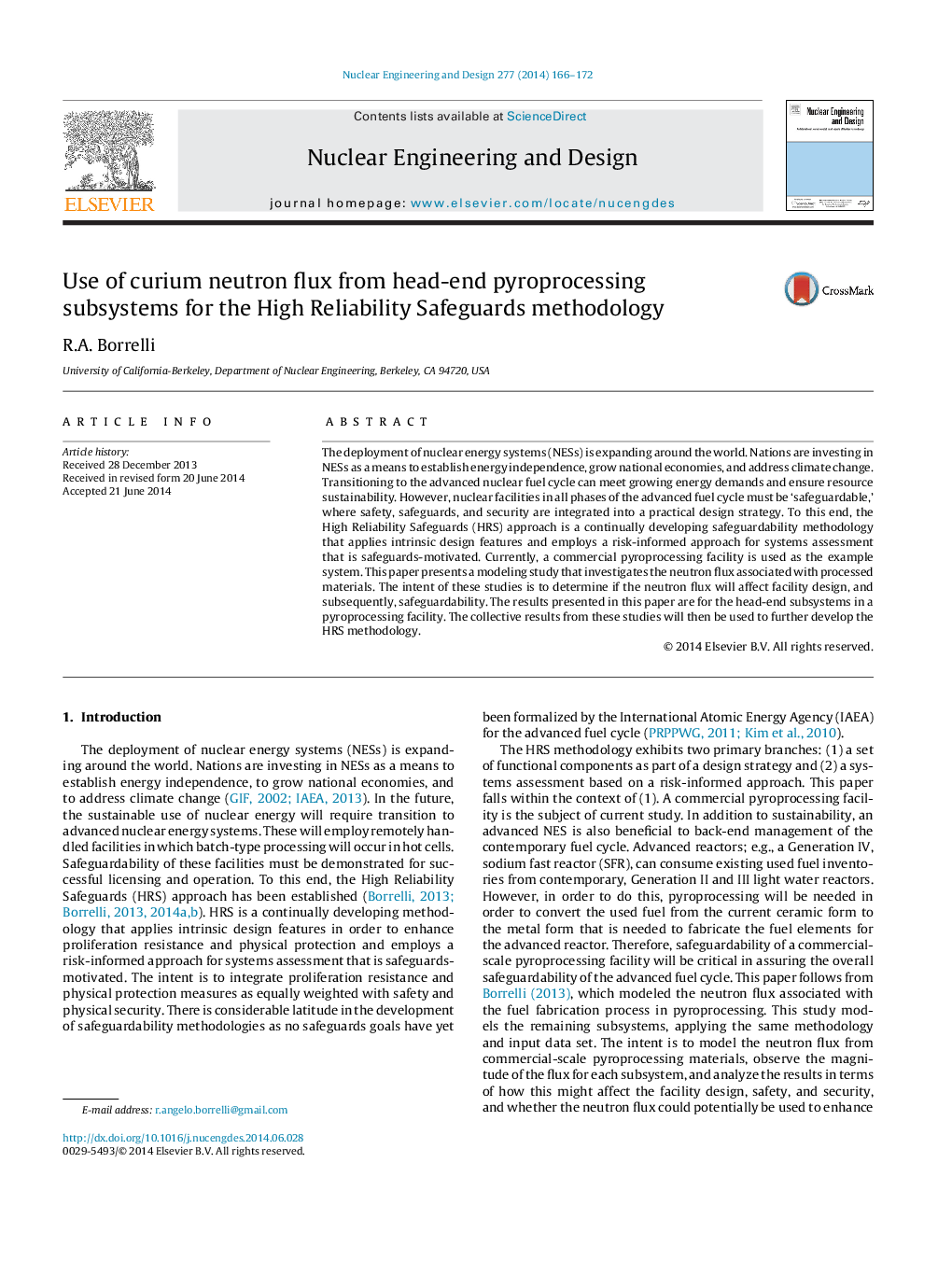| Article ID | Journal | Published Year | Pages | File Type |
|---|---|---|---|---|
| 6762344 | Nuclear Engineering and Design | 2014 | 7 Pages |
Abstract
The deployment of nuclear energy systems (NESs) is expanding around the world. Nations are investing in NESs as a means to establish energy independence, grow national economies, and address climate change. Transitioning to the advanced nuclear fuel cycle can meet growing energy demands and ensure resource sustainability. However, nuclear facilities in all phases of the advanced fuel cycle must be 'safeguardable,' where safety, safeguards, and security are integrated into a practical design strategy. To this end, the High Reliability Safeguards (HRS) approach is a continually developing safeguardability methodology that applies intrinsic design features and employs a risk-informed approach for systems assessment that is safeguards-motivated. Currently, a commercial pyroprocessing facility is used as the example system. This paper presents a modeling study that investigates the neutron flux associated with processed materials. The intent of these studies is to determine if the neutron flux will affect facility design, and subsequently, safeguardability. The results presented in this paper are for the head-end subsystems in a pyroprocessing facility. The collective results from these studies will then be used to further develop the HRS methodology.
Related Topics
Physical Sciences and Engineering
Energy
Energy Engineering and Power Technology
Authors
R.A. Borrelli,
